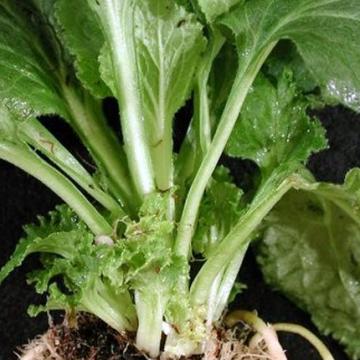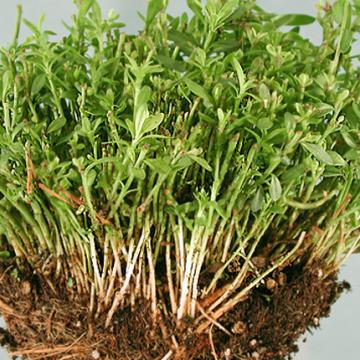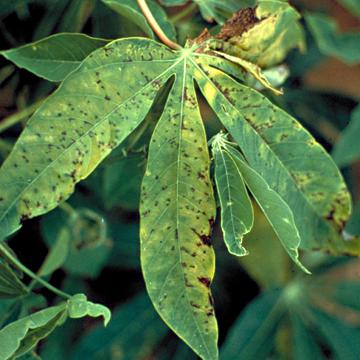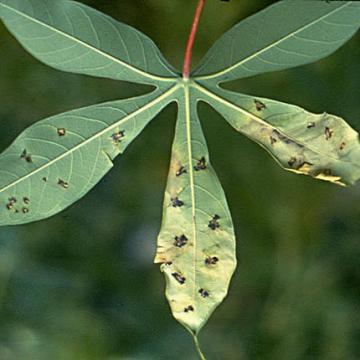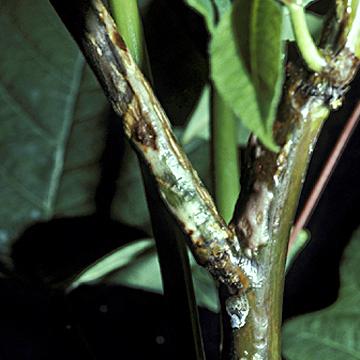DISEASE: Bacterial fasciation (Shoot proliferation)
HOST: Campanula
Overproduction of new shoots and short, thickened, distorted stems.
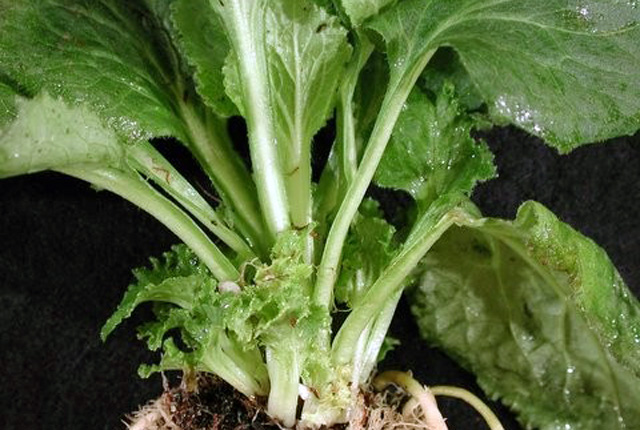
Bacterial fasciation (Shoot proliferation) | Campanula
DISEASE: Bacterial fasciation (Shoot proliferation)
HOST: Campanula (Campanula sp.)
PATHOGEN: Rhodococcus fascians
SOURCE: M. Putnam
DISEASE: Bacterial fasciation (Shoot proliferation)
HOST: Candytuft
The disease causes production of multiple shoots.
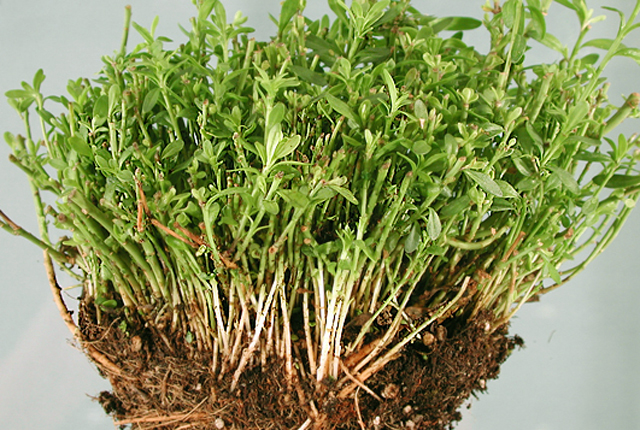
Bacterial fasciation (Shoot proliferation) | Candytuft
DISEASE: Bacterial fasciation (Shoot proliferation)
HOST: Candytuft (Iberis sp.)
PATHOGEN: Rhodococcus fascians
SOURCE: M. Putnam
DISEASE: Bacterial leaf spot (Bacterial necrosis)
HOST: Cassava
Cassava with yellowish leaves and water-soaked, angular spots. The disease is primarily on foliage, although the pathogen may invade stem buds and young branches.
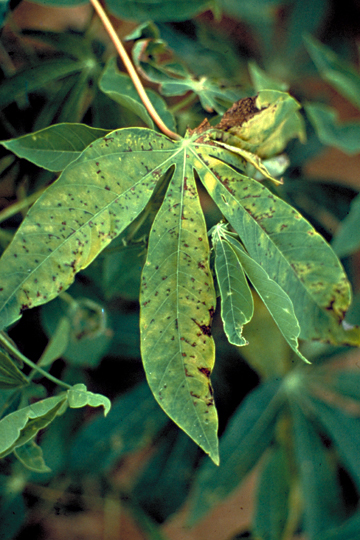
Bacterial leaf spot (Bacterial necrosis) | Cassava
DISEASE: Bacterial leaf spot (Bacterial necrosis)
HOST: Cassava (Manihot esculenta)
PATHOGEN: Xanthomonas cassavae
PATHOGEN SYNONYM: Xanthomonas campestris pv. cassavae
SOURCE: APS
DISEASE: Bacterial leaf spot (Bacterial necrosis)
HOST: Cassava
Cassava with brownish lesions and blackish edges. Leaves turn yellow with multiple infection sites.
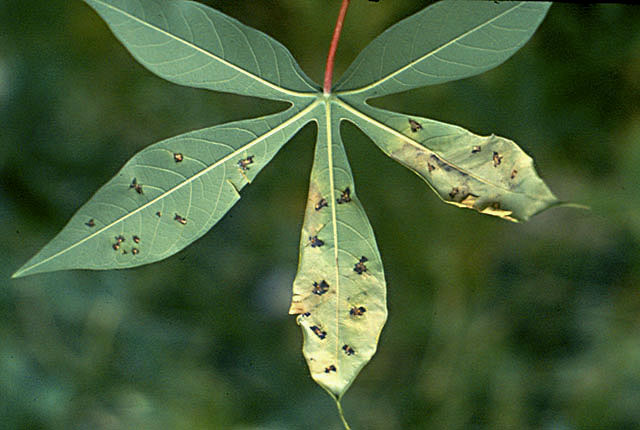
Bacterial leaf spot (Bacterial necrosis) | Cassava
DISEASE: Bacterial leaf spot (Bacterial necrosis)
HOST: Cassava (Manihot esculenta)
PATHOGEN: Xanthomonas cassavae
PATHOGEN SYNONYM: Xanthomonas campestris pv. cassavae
SOURCE: H. Maraite, A. Alvarez
DISEASE: Greasy center
HOST: Poinsettia
Stem with dark cankers and copious ooze. Necrotic areas are greasy in appearance and eventually turn light tan to brown with a papery texture as the cuticle becomes detached.
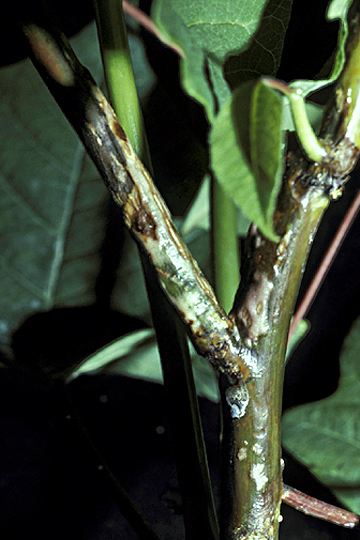
Greasy center | Poinsettia
DISEASE: Greasy center
HOST: Poinsettia (Euphorbia pulcherrima)
PATHOGEN: Pseudomonas viridiflava
SOURCE: R. Raabe


